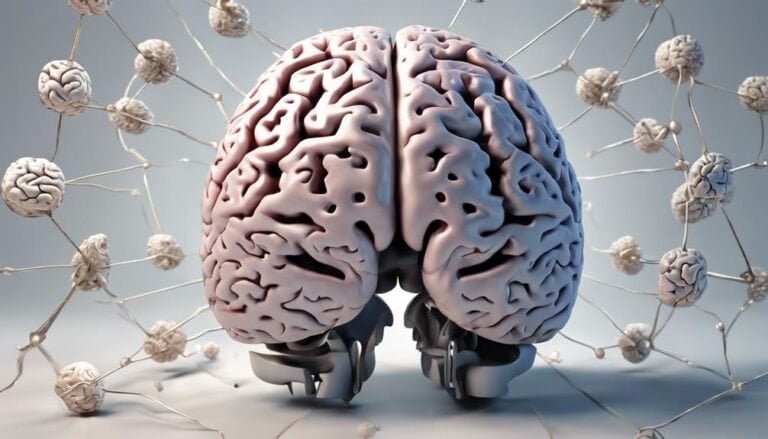Unlock Healing with Holotropic Breathwork Today
“The breath is the bridge which connects life to consciousness, which unites your body to your thoughts.”
– Thich Nhat Hanh
Welcome to an extraordinary journey of self-discovery and inner exploration through the transformative practice of Holotropic Breathwork. Developed by Dr. Stanislav Grof and Christina Grof in the 1970s, Holotropic Breathwork combines conscious breathing and evocative music to guide participants into an altered state of consciousness. Inspired by ancient spiritual practices and modern psychology, this alternative healing therapy offers a profound path towards personal growth, spiritual development, and holistic well-being.
During Holotropic Breathwork sessions, individuals immerse themselves in deep, rhythmic breathing while listening to evocative music. This intentional breathwork, also known as “conscious breathing,” allows for expanded awareness, emotional catharsis, and access to deep-rooted traumas. Through this practice, participants can unlock the potential for healing, self-discovery, and transformation.
Key Takeaways:
- Holotropic Breathwork combines conscious breathing and evocative music to induce an altered state of consciousness.
- This transformative practice draws inspiration from ancient spiritual traditions and modern psychology.
- Through Holotropic Breathwork, individuals can access suppressed emotions, release tension, and explore deep-rooted traumas.
- The practice of conscious breathing promotes holistic healing, self-discovery, and spiritual growth.
- Embark on a breathwork journey and unlock the remarkable healing potential within you.
What is Holotropic Breathwork?
Holotropic Breathwork is a profound self-discovery and healing technique that combines ancient spiritual practices with modern psychology to induce an altered state of consciousness. It involves deep, rhythmic breathing accompanied by evocative music to facilitate a transformative experience.
During Holotropic Breathwork sessions, participants engage in intentional, deep breathing to access an altered state of consciousness. This altered state allows for profound self-exploration, healing, and personal growth. The evocative music serves as a catalyst, enhancing the experience and creating a supportive environment for introspection.
After a Holotropic Breathwork session, participants are encouraged to engage in creative expression, particularly through mandala creation. This expressive art form allows for a deeper integration of the experience and provides a tangible representation of the journey undertaken during the session.
Holotropic Breathwork combines deep breathing, evocative music, and creative expression to guide individuals on a transformative journey of self-discovery and healing.
By tapping into altered states of consciousness and exploring the depths of the psyche, Holotropic Breathwork offers a unique opportunity for personal transformation. It provides a safe and supportive space for individuals to delve into their inner world, uncovering hidden aspects of themselves and accessing profound insights.
Through the deliberate practice of Holotropic Breathwork, individuals can explore the intersections of mind, body, and spirit, leading to a deeper understanding of themselves and their place in the world. This technique is rooted in ancient traditions and has been adapted to suit the needs of modern individuals seeking inner growth and healing.
Embark on the journey of Holotropic Breathwork and discover the transformative power of this ancient practice. Dive deep into your innermost being, embrace the healing potential within you, and unlock a profound sense of self-discovery and growth.
How is Holotropic Breathwork helpful?
Holotropic Breathwork offers numerous benefits for holistic health and personal growth. This transformational practice allows for emotional catharsis, enabling the release of suppressed emotions and memories. Through deep, conscious breathing, individuals can access and process deep-rooted traumas that may be challenging to address through traditional therapy. Holotropic Breathwork serves as a catalyst for self-discovery, leading to a deeper understanding of oneself and the world.
By engaging in Holotropic Breathwork, individuals can experience an emotional catharsis. This practice creates a safe space for suppressed emotions to surface and be released, providing a profound sense of relief and healing. Through the rhythmic and intentional breathwork, participants can tap into their inner reserves and access the emotions that have been buried deep within.
“Holotropic Breathwork offers a profound pathway for emotional release and catharsis, allowing individuals to confront and heal deep-rooted traumas.” – Dr. Sarah Thompson, Holistic Therapist
In addition to emotional healing, Holotropic Breathwork promotes holistic health. This practice has been shown to enhance mental, emotional, and physical well-being. The deep, rhythmic breathing oxygenates the body, improving brain function and promoting a sense of clarity and calm. By addressing deep-rooted traumas, Holotropic Breathwork allows for the healing of the whole person, supporting overall well-being and holistic health.
Furthermore, Holotropic Breathwork is a powerful tool for self-discovery and spiritual development. Through the altered state of consciousness induced by the breathwork, individuals can gain insights into their own psyche, uncovering hidden aspects of themselves and their life’s purpose. This practice fosters a deep connection to oneself and the world, opening doors to profound spiritual growth and transformation.
How to practice Holotropic Breathwork?
Practicing Holotropic Breathwork is a deliberate and conscious process that involves specific techniques and a conducive environment. Here’s a step-by-step guide to help you get started:
Deliberate Process and Stage Setting
Before beginning a Holotropic Breathwork session, it’s important to create a safe and comfortable space. Find a quiet room with soft lighting and ensure you won’t be interrupted. Set a clear intention for the session, whether it’s for self-discovery, emotional healing, or spiritual growth.
Breathing Technique
The key element of Holotropic Breathwork is the breathing technique. Lie down or sit in a comfortable position and take deep, rapid breaths in and out through your mouth. Let the breath be deep and full, allowing it to go deep into your diaphragm. This type of breathing technique helps induce an altered state of consciousness and facilitates deep emotional release.
Music and Acoustic Stimulation
Select music that resonates with your intentions and preferences. The evocative music serves as a guide, stimulating emotions and deepening your inward journey. Consider using headphones for a more immersive experience. Create an atmosphere with minimal distractions or external noise.
Mandala Creation
After the breathing session, engage in mandala creation as a form of creative expression. Use colors and patterns that reflect your experience. This process allows you to externalize and integrate the insights and emotions that surfaced during the session.
Sitter’s Role
In group sessions, participants work in pairs, with one person acting as the breather and the other as the sitter. The sitter provides support and ensures the breather’s safety throughout the session. They maintain a calm presence, offering reassurance if any discomfort arises.
Session Duration and Closure
Holotropic Breathwork sessions typically last for two to three hours, allowing enough time for deep exploration and emotional release. Towards the end of the session, the facilitator guides the participants to gradually slow down their breathing, bringing them back to a relaxed state. The session concludes with a period of integration and closure.
Facilitator Sensitivity
Facilitators play a crucial role in creating a safe and supportive environment. They are trained to hold space for participants, respond sensitively to individual needs, and ensure the overall well-being of everyone involved. It’s important to seek sessions facilitated by certified professionals.
Discussion Groups
Following a Holotropic Breathwork session, participants may have the opportunity to share their insights and experiences in discussion groups. This provides a supportive space for integration, reflection, and deepening understanding.
Embarking on a Holotropic Breathwork journey requires intention, guidance, and an open mind. By following these steps, you can experience the transformative power of Holotropic Breathwork in a safe and nurturing environment.
When is it best to practice Holotropic Breathwork?
Holotropic Breathwork is a transformative practice that can be beneficial for individuals seeking self-discovery, personal growth, and enhanced well-being. It is best practiced in a safe and supportive environment, such as a group session led by a certified facilitator. In this setting, individuals can explore the depths of their consciousness and tap into the power of their breath to unlock new insights and experiences.
Holotropic Breathwork can also complement traditional therapy, providing an additional avenue for self-exploration and healing. By engaging in this practice, individuals can deepen their connection with themselves and gain a better understanding of their emotions, thoughts, and beliefs. It offers a unique opportunity to access altered states of consciousness and explore non-ordinary experiences that may facilitate personal growth and transformation.
However, it is important to note that Holotropic Breathwork may not be recommended for individuals with specific health concerns. If you have any pre-existing medical conditions or concerns, it is advisable to consult with a healthcare professional before participating in a Holotropic Breathwork session.
In summary, Holotropic Breathwork is best practiced in a safe and supportive environment, allowing individuals to embark on a journey of self-discovery, personal growth, and exploration of altered states of consciousness. By engaging in this complementary practice, individuals can tap into their inner potential and experience profound transformations within a safe and nurturing space. Consultation with a certified facilitator and healthcare professional, when necessary, ensures a responsible and beneficial experience.
| Benefits of Holotropic Breathwork | Recommended For |
|---|---|
|
|
Breathwork Therapy – a simple yet profound practice
Breathwork Therapy is a practice that focuses on controlled breathing to improve mental, physical, and spiritual health. It recognizes the powerful mind-body connection and the impact that breath has on our overall well-being.
By consciously controlling our breath, we can release tension, access hidden emotions, and cultivate self-awareness. Breathwork Therapy draws inspiration from ancient practices like yoga and pranayama, which have long emphasized the transformative power of breath control.
In modern times, Breathwork Therapy has evolved into various forms, such as Holotropic Breathwork and Transformational Breathwork, each offering unique techniques and benefits. This simple yet profound practice offers a pathway to emotional healing and personal transformation.
The Benefits of Breathwork Therapy
Breathwork Therapy provides numerous benefits that contribute to overall well-being:
- Stress reduction: Controlled breathing techniques can help release tension and promote relaxation.
- Emotional healing: By accessing hidden emotions through breathwork, individuals can navigate and heal past traumas.
- Enhanced self-awareness: Conscious breath control facilitates self-reflection and deepens the understanding of one’s internal state.
- Improved focus and clarity: Breathwork practices can sharpen mental acuity and promote clearer thinking.
- Physical well-being: Proper breathing boosts oxygen levels, improves digestion, supports healthy organ function, and strengthens the immune system.
- Spiritual growth: Breathwork Therapy can deepen spiritual practices and promote a sense of connection to something greater than oneself.
Through Breathwork Therapy, individuals can tap into the power of their breath to foster mind-body harmony and embark on a journey of personal growth and self-transformation.
Types of Breathwork Therapy
| Type of Breathwork Therapy | Techniques | Benefits |
|---|---|---|
| Holotropic Breathwork | Deep, rapid breathing to induce altered states of consciousness | Facilitates self-exploration and emotional release |
| Pranayama Breathwork | Various breath control exercises originating from ancient Indian practices | Enhances energy flow, calms the mind, and promotes spiritual growth |
| Transformational Breathwork | Conscious connected breathing to promote personal development and transformation | Encourages self-discovery, emotional healing, and expansion of consciousness |
| Pursed Lip Breathing | Inhaling through the nose and exhaling through pursed lips | Improves lung function and eases shortness of breath |
| Diaphragmatic Breathing | Deep breathing that engages the diaphragm for relaxation and stress reduction | Calms the nervous system and enhances physical well-being |
| Rebirthing Breathwork | Continuous, conscious breathing to release suppressed emotions and trauma | Facilitates mental and emotional healing and promotes rebirth and renewal |
Breathwork Therapy encompasses a range of techniques, allowing individuals to find a practice that resonates with their needs and preferences. Each type offers a unique approach to harnessing the power of breath for healing, self-discovery, and personal growth.
Continue reading to explore the fascinating science behind Breathwork Therapy in the next section.
The Science Behind Breathwork Therapy
Breathwork Therapy is grounded in scientific principles. By understanding the physiological effects of conscious breathing, we can appreciate its transformative potential for overall well-being.
One of the key benefits of Breathwork Therapy is increased oxygenation. Deep breathing techniques enhance brain function and mental clarity by delivering more oxygen to the brain. This oxygenation supports cognitive processes, improves focus, and enhances overall brain health.
Specific breathing techniques employed in Breathwork Therapy also stimulate different parts of the brain, influencing mood and cognition. For example, slow and controlled breathing activates the parasympathetic nervous system, promoting relaxation and stress reduction. On the other hand, rapid and energizing breathwork techniques can stimulate the sympathetic nervous system, providing an uplift in mood and energy levels.
Furthermore, nervous system regulation is a fundamental aspect of Breathwork Therapy. By engaging in intentional and conscious breath control, we can influence the autonomic nervous system. This regulation helps to balance stress responses, promote relaxation, and support emotional well-being.
Breathwork Therapy has a holistic approach to healing, aligning the physical, mental, and emotional aspects of ourselves. By cultivating a deeper connection to our breath, we tap into powerful resources for self-healing. Through conscious breathing, we can activate the body’s natural healing mechanisms and facilitate the release of tension, emotional blocks, and trauma.
In conclusion, the science behind Breathwork Therapy highlights its effectiveness in promoting overall well-being. From oxygenation and brain function to nervous system regulation and self-healing, conscious breathing offers a profound pathway to holistic health and personal transformation.
Types of Breathwork Therapy
There are various types of Breathwork Therapy that offer unique approaches and advantages for individuals seeking self-discovery, healing, and personal growth. Let’s explore some of the most well-known types:
Holotropic Breathwork
Holotropic Breathwork focuses on rapid breathing and the induction of altered states of consciousness. Developed by Dr. Stanislav Grof and his wife Christina, this technique combines deep and rhythmic breathing with evocative music to facilitate profound self-discovery and healing.
Pranayama Breathwork
Pranayama Breathwork originates from ancient Indian practices and centers around breath control. It emphasizes specific breathing techniques to regulate and enhance life force energy, promoting physical, mental, and spiritual well-being.
Transformational Breathwork
Transformational Breathwork aims for personal development and metamorphosis through conscious connected breathing. By accessing a continuous flow of breath, individuals can release energetic blockages, expand their capacity for joy, and cultivate a deeper connection to themselves and the world around them.
Pursed Lip Breathing
Pursed Lip Breathing is a technique often recommended for individuals with respiratory conditions such as chronic obstructive pulmonary disease (COPD). It involves inhaling slowly through the nose and exhaling gently through pursed lips. This technique helps regulate breathing and reduces shortness of breath.
Diaphragmatic Breathing
Diaphragmatic Breathing, also known as belly or abdominal breathing, involves consciously engaging the diaphragm while breathing. By expanding the belly on the inhale and contracting it on the exhale, individuals can promote relaxation, reduce stress, and increase oxygenation.
Rebirthing Breathwork
Rebirthing Breathwork focuses on conscious connected breathing to release deep-rooted traumas and promote personal transformation. This technique believes that revisiting the experience of birth through breath can facilitate healing and reshape one’s relationship with life.
Each type of Breathwork Therapy offers its own unique techniques and benefits. It’s important to explore and find a practice that resonates with you and meets your specific needs and goals.
What Happens in a Breathwork Therapy Session
A Breathwork Therapy session provides individuals with a unique opportunity to explore the mind-body connection in a peaceful and therapeutic environment. Led by a trained breathwork therapist, participants engage in breath control and guided breathing exercises to tap into the transformative power of their breath for healing and personal growth. Throughout the session, a range of emotions and physical sensations may be experienced as individuals delve deeper into their breathwork practice.
The breathwork therapist plays a crucial role in guiding participants through various breathing techniques, ensuring understanding and safety throughout the session. By creating a supportive and nurturing environment, the therapist helps individuals feel at ease as they explore the profound effects of conscious breathing.
During a breathwork therapy session, participants may experience a heightened sense of self-awareness, emotional release, and deep relaxation. The therapeutic environment allows individuals to connect with their breath, enabling them to access hidden emotions, release tension, and foster a greater sense of well-being.
The breathwork therapist may introduce different breathwork techniques, such as diaphragmatic breathing or alternate nostril breathing, to assist individuals in deepening their practice and facilitating specific outcomes. These guided breathing exercises help individuals cultivate mindfulness, enhance their mind-body connection, and promote a state of inner calmness and clarity.
Benefits of Breathwork Therapy Sessions:
- A heightened sense of self-awareness and self-discovery
- Relief from stress, anxiety, and emotional tension
- Enhanced mental clarity and focus
- Improved emotional well-being and resilience
- Strengthened mind-body connection
- Increased relaxation and a sense of inner peace
Throughout the session, individuals are encouraged to embrace their experience fully, allowing the breath to guide them on their journey of healing and personal growth. Breathwork therapy sessions provide a safe and supportive space for individuals to explore their inner world, access their innate wisdom, and cultivate a deeper understanding of themselves.
“Breath is the bridge which connects life to consciousness, which unites your body to your thoughts.”
By harnessing the power of breath control within a therapeutic environment, individuals can discover profound insights, release emotional blockages, and embark on a journey of self-transformation.
Benefits of Breathwork Therapy Sessions
| Benefits | Description |
|---|---|
| Heightened Self-Awareness | Develop a deeper understanding of oneself and one’s emotions. |
| Stress Relief | Release anxiety, stress, and emotional tension. |
| Mental Clarity | Improve focus, concentration, and cognitive function. |
| Emotional Well-Being | Enhance emotional resilience and inner balance. |
| Mind-Body Connection | Strengthen the connection between the mind and the body. |
| Relaxation | Experience deep relaxation and inner peace. |
Conclusion
Breathwork, whether in the form of Holotropic Breathwork or other Breathwork Therapy techniques, offers a powerful means of self-discovery, healing, and personal growth. By harnessing the transformative potential of conscious breathing, individuals can unlock hidden emotions, release tension, and cultivate self-awareness.
The science behind Breathwork Therapy supports its effectiveness in improving mental, physical, and emotional well-being. Studies have shown that intentional breathwork techniques can oxygenate the brain, enhance brain function, and regulate the autonomic nervous system, leading to reduced stress and increased relaxation.
Whether practiced in a group setting or individually, Breathwork Therapy provides a unique pathway to inner exploration and holistic healing. It offers a safe and supportive environment for individuals to engage in self-reflection, gain insights, and foster personal growth. Embark on your own breathwork journey and experience the profound benefits it can bring to your life.
FAQ
What is Holotropic Breathwork?
Holotropic Breathwork is a technique developed by Dr. Stanislav Grof and his wife Christina in the 1970s. It combines deep, rhythmic breathing with evocative music to create an altered state of consciousness. Holotropic Breathwork draws inspiration from ancient spiritual practices and modern psychology to promote holistic healing and self-discovery.
How is Holotropic Breathwork helpful?
Holotropic Breathwork offers numerous benefits for holistic healing and personal growth. It can assist in emotional catharsis, allowing suppressed emotions and memories to surface for release. It also provides a pathway to access and process deep-rooted traumas that may be difficult to address through traditional therapy. Holotropic Breathwork promotes holistic health, enhancing mental, emotional, and physical well-being. Additionally, it serves as a catalyst for self-discovery and spiritual development, offering insights and a deeper connection to oneself and the world.
How to practice Holotropic Breathwork?
Practicing Holotropic Breathwork involves a deliberate and conscious process. It begins with creating a conducive environment for the session, including the use of appropriate music and acoustic stimulation. Participants engage in a specific breathing technique, such as deep and rapid breaths. After the session, mandala creation is encouraged as a form of creative expression. In group settings, participants work in pairs, with one person acting as the breather and the other as the sitter. Sessions typically last for two to three hours and are closed in a way that allows for integration and completion of the experience. Facilitators play a crucial role in ensuring the safety and sensitivity of the session. Discussion groups may follow the session to allow participants to share their insights and experiences.
When is it best to practice Holotropic Breathwork?
Holotropic Breathwork is best practiced in a safe and supportive environment, such as a group session led by a certified facilitator. It can be beneficial for individuals seeking self-discovery, personal growth, and enhanced well-being. Holotropic Breathwork can also complement traditional psychotherapy, providing additional insights and a deeper connection to oneself. It is particularly suitable for those interested in exploring altered states of consciousness and non-ordinary experiences. However, it is important to note that Holotropic Breathwork may not be recommended for individuals with specific health concerns, and consultation with a healthcare professional is advised.
What is Breathwork Therapy?
Breathwork Therapy is a practice that focuses on controlled breathing to improve mental, physical, and spiritual health. It recognizes the powerful connection between breath and our overall well-being. By consciously controlling our breath, we can release tension, access hidden emotions, and cultivate self-awareness. Breathwork Therapy has its roots in ancient practices like yoga and pranayama, which emphasize the power of breath control. In modern times, it has evolved into various forms such as Holotropic Breathwork and Transformational Breathwork, each with unique techniques and benefits. This simple yet profound practice offers a pathway to healing and personal transformation.
What happens in a Breathwork Therapy session?
A Breathwork Therapy session typically takes place in a peaceful environment where individuals engage in breath control and guided breathing exercises. This therapeutic environment allows for the exploration of the mind-body connection. A trained breathwork therapist guides participants through various breathing techniques, ensuring understanding and safety. Throughout the session, participants may experience a range of emotions and physical sensations as they tap into the power of their breath for healing and personal growth.
What are the types of Breathwork Therapy?
There are various types of Breathwork Therapy, each with its own techniques and benefits. Some commonly known types include Holotropic Breathwork, which focuses on rapid breathing and altered states of consciousness, and Pranayama Breathwork, which originates from ancient Indian practices and emphasizes breath control. Transformational Breathwork aims for personal development and metamorphosis through conscious connected breathing. Other types include Pursed Lip Breathing, Diaphragmatic Breathing, and Rebirthing Breathwork. Each type offers unique approaches and advantages, allowing individuals to find a breathwork practice that resonates with them.
How does Breathwork Therapy work?
Breathwork Therapy is grounded in scientific principles. Techniques like deep breathing increase oxygenation, enhancing brain function and mental clarity. Specific breathing techniques also stimulate different parts of the brain, influencing mood and cognition. Breathwork Therapy impacts both sides of the autonomic nervous system, regulating stress responses and promoting relaxation. Additionally, by aligning the physical, mental, and emotional aspects of ourselves, Breathwork Therapy facilitates self-healing processes. The science behind Breathwork Therapy supports its effectiveness in promoting overall well-being.







